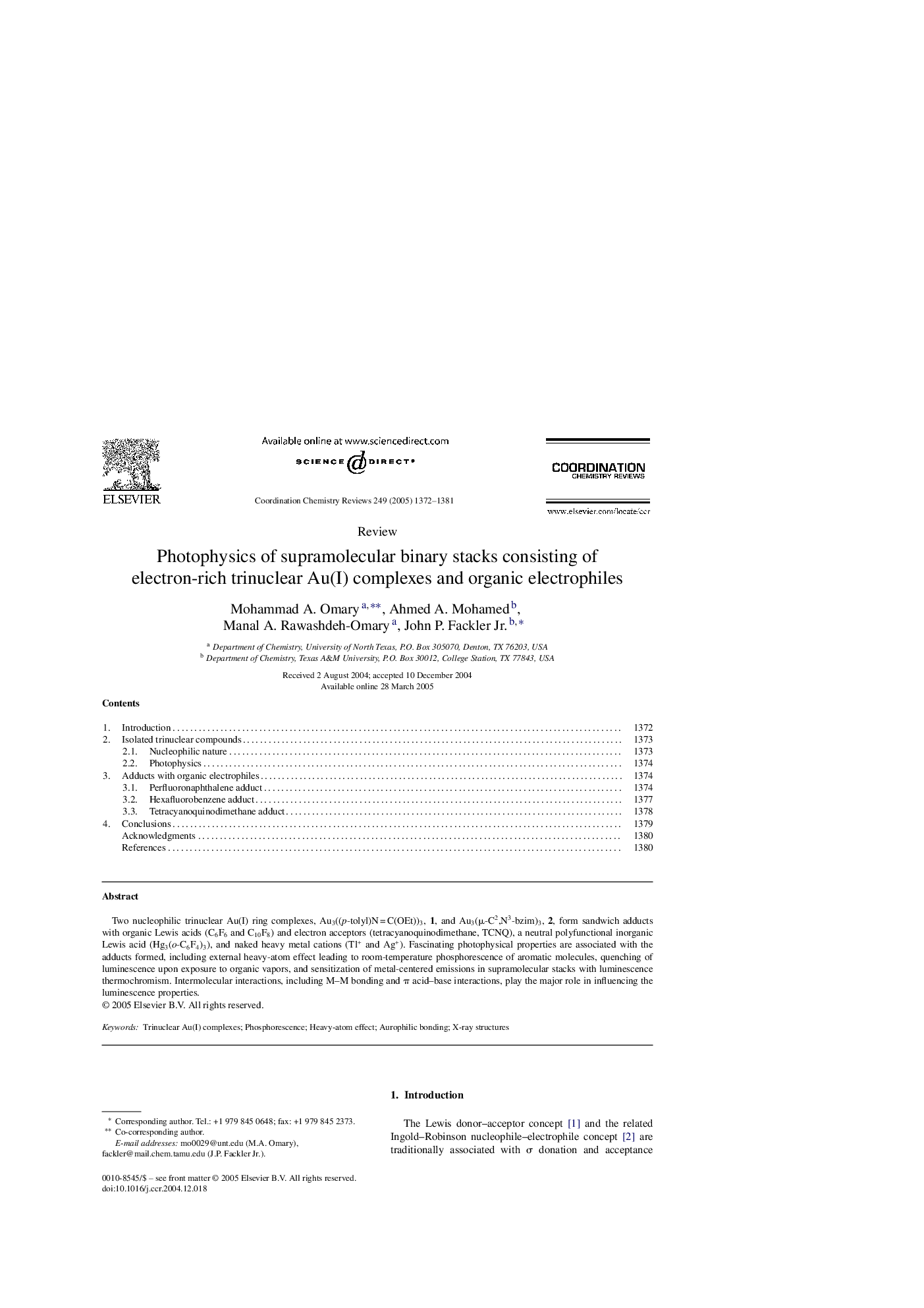| Article ID | Journal | Published Year | Pages | File Type |
|---|---|---|---|---|
| 9763697 | Coordination Chemistry Reviews | 2005 | 10 Pages |
Abstract
Two nucleophilic trinuclear Au(I) ring complexes, Au3((p-tolyl)N = C(OEt))3, 1, and Au3(μ-C2,N3-bzim)3, 2, form sandwich adducts with organic Lewis acids (C6F6 and C10F8) and electron acceptors (tetracyanoquinodimethane, TCNQ), a neutral polyfunctional inorganic Lewis acid (Hg3(o-C6F4)3), and naked heavy metal cations (Tl+ and Ag+). Fascinating photophysical properties are associated with the adducts formed, including external heavy-atom effect leading to room-temperature phosphorescence of aromatic molecules, quenching of luminescence upon exposure to organic vapors, and sensitization of metal-centered emissions in supramolecular stacks with luminescence thermochromism. Intermolecular interactions, including M-M bonding and Ï acid-base interactions, play the major role in influencing the luminescence properties.
Related Topics
Physical Sciences and Engineering
Chemistry
Inorganic Chemistry
Authors
Mohammad A. Omary, Ahmed A. Mohamed, Manal A. Rawashdeh-Omary, John P. Jr.,
